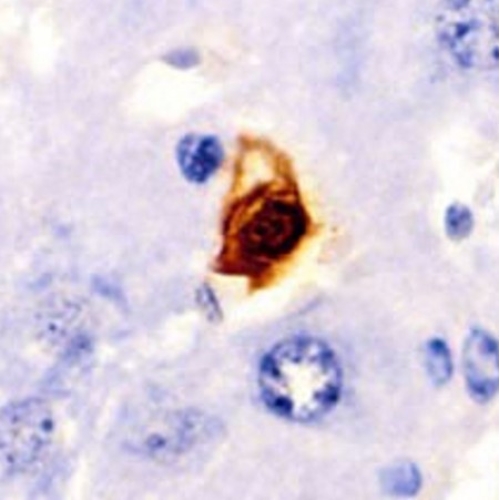Ageing is one of the most profound and inevitable processes that affect living organisms. As cells age, they undergo a series of changes that not only affect their function but also the health and longevity of the organism as a whole. The effects of ageing on cells contribute to a range of diseases and disabilities, making ageing the number one health challenge of our time.
With the world’s population over 60 expected to nearly double by 2050—from 12% to 22%—addressing age-related health issues has never been more critical. Extending life expectancy by just 2.2 years could result in over $7 trillion in healthcare savings over the next 50 years. The societal and economic importance of combating age-related diseases is enormous.
Understanding Cellular Ageing and Senescence
Ageing at the cellular level is a complex and multifactorial process. Cells accumulate damage over time, resulting in a gradual decline in their ability to function. This damage is primarily caused by oxidative stress, DNA damage, and the shortening of telomeres—the protective caps at the ends of chromosomes.
One of the most prominent manifestations of cellular ageing is cellular senescence. Senescence occurs when cells permanently exit the cell cycle and lose their ability to divide. While senescent cells are not dead, they no longer function optimally. They secrete pro-inflammatory factors that can cause damage to surrounding tissues, contributing to the progression of age-related diseases such as cancer, cardiovascular diseases, and neurodegenerative disorders.
In particular, markers like SA-β-galactosidase (SA-β-gal) and p21 are often used to identify senescent cells. These markers accumulate as cells age and undergo stress, serving as key indicators of cellular decline. In the context of ageing skin, fibroblasts and keratinocytes—cells responsible for wound healing and skin regeneration—experience reduced functionality, contributing to slower healing and increased vulnerability to injury.
Five Alarm Bio’s Innovative Approach
Five Alarm Bio (FAB) is tackling the issue of ageing head-on by developing small molecule compounds that enhance the body’s ability to combat the cellular damage that accumulates with age. Founded in 2016, the company is based at the Babraham Research Campus in Cambridge, UK, where it has access to cutting-edge research facilities, including the LiveL@bs initiative. This collaboration has allowed them to push the boundaries of ageing research.
FAB's key objective is to develop compounds that target the pathways involved in ageing and cellular senescence. These compounds aim to regenerate cell functionality, delay senescence, and improve wound healing—key factors in the overall fight against age-related diseases.
At the heart of this research is a small molecule compound called FAB1, which has shown remarkable potential in improving longevity and reducing cellular senescence in early studies.
FAB1 and Its Impact on Longevity
The research conducted by Five Alarm Bio began with a low-potency ‘probe’ molecule—FAB1. Initial experiments focused on understanding how FAB1 could influence ageing by using the nematode Caenorhabditis elegans (C. elegans), a model organism frequently used in ageing research due to its short lifespan and well-characterised biology.
The nematodes were exposed to either 5 mM FAB1 or a vehicle, and their motility was tracked over time using video microscopy and image analysis. Motility, or the ability to move, is a crucial indicator of health and longevity in C. elegans. The study found that FAB1 significantly improved the motility of the worms, especially during the critical period between days 2 and 7, where a noticeable improvement in movement was recorded.
Perhaps most importantly, FAB1 showed no signs of toxicity at a concentration of 5 mM, suggesting that it could offer a safe method for enhancing longevity. This initial success laid the foundation for further exploration of FAB1’s potential in cellular models.
Reducing Senescence Markers in Human Dermal Fibroblasts
In addition to improving longevity in C. elegans, FAB1 was tested on human dermal fibroblasts, a key cell type involved in wound healing and skin regeneration. The aim was to determine whether FAB1 could reduce the expression of markers associated with senescence, such as SA-β-gal and p21, in these cells.
For this study, human dermal fibroblasts were treated with 0.5 µM FAB1 for up to 17 weeks. The cells were then examined using immunofluorescence microscopy to detect changes in senescence marker expression. The results were encouraging: treatment with FAB1 significantly reduced the expression of senescence markers, particularly SA-β-galactosidase and p21.
In addition to reducing these molecular markers, FAB1 also had a notable effect on the morphology of the fibroblasts. Senescent cells typically exhibit an increase in cell area—a hallmark of cellular ageing. However, cells treated with FAB1 showed a reduction in cell area, indicating a reversal of some of the morphological characteristics associated with ageing.
This ability to reduce both the molecular and physical signs of senescence suggests that FAB1 could play a vital role in combating cellular ageing, particularly in tissues like the skin, where senescence contributes to wrinkles, loss of elasticity, and delayed wound healing.
FAB15: A Novel Compound for Wound Healing
While FAB1 showed promise in improving longevity and reducing senescence, further research led to the discovery of a novel compound—FAB15. FAB15 was identified through a high-throughput phenotypic screen performed on an ImageExpress HT.ai high-content imager at the Babraham Institute.
The high-throughput screening process involved testing a library of compounds to identify those that could promote cellular regeneration. From this screening, a smaller panel of compounds, including FAB15, was selected for further analysis using an in vitro wound healing scratch assay. This assay involved creating a ‘scratch’ in a monolayer of cells and monitoring how quickly the cells migrated to close the wound—a key measure of wound healing ability.
The results were remarkable: FAB15 significantly accelerated wound closure in both human dermal fibroblasts and keratinocytes. In fact, it reduced the time to close 95% of the wound from 44 hours to just 24 hours. This dramatic improvement suggests that FAB15 could have profound applications in regenerative medicine, particularly in promoting faster healing of skin injuries.
LiveL@bs: A Hub for Scientific Innovation
One of the key factors contributing to the success of Five Alarm Bio’s research is its access to state-of-the-art facilities at the LiveL@bs center, part of the Babraham Research Campus. LiveL@bs provides a flexible, co-working lab space designed for early-stage life science companies, offering access to cutting-edge instruments and a collaborative environment.
The ability to perform high-throughput screenings and in vitro assays at the Babraham Institute, combined with access to advanced imaging technologies like the Incucyte imager, allowed Five Alarm Bio to accelerate their research timeline. What could have taken years was accomplished in just 18 months, thanks to the resources and support available at LiveL@bs.
Moreover, the collaborative atmosphere fostered by LiveL@bs allowed FAB scientists to share knowledge, network with other researchers, and leverage the expertise of experienced scientists. This community-driven approach played a significant role in advancing the development of FAB’s small molecule compounds.
The Societal and Medical Implications of FAB’s Research
Ageing is a massive challenge for modern healthcare, not only because of the physical decline it causes but also due to the enormous economic burden it places on societies. Age-related diseases, including cardiovascular diseases, cancer, and neurodegenerative disorders, are the leading causes of mortality and morbidity worldwide.
With the proportion of older adults rapidly increasing, it is essential to develop therapies that can slow or reverse the cellular damage that leads to these conditions. Five Alarm Bio’s small molecule compounds, particularly FAB1 and FAB15, represent a promising step toward this goal.
By reducing cellular senescence and promoting wound healing, FAB’s compounds have the potential to improve the quality of life for millions of people. For instance, FAB15’s ability to enhance wound closure could revolutionise wound care, particularly for older adults who often experience slow healing and complications from injuries.
Additionally, FAB1’s impact on longevity and cellular regeneration suggests that it could be developed into a therapeutic intervention for a wide range of age-related diseases. Whether it’s promoting skin health, enhancing recovery from injuries, or improving overall cellular function, the implications of these compounds are profound.
Future of Ageing Research
The research conducted by Five Alarm Bio is still in its early stages, but the results so far are incredibly promising. The company is continuing to develop its portfolio of small molecule compounds, with a focus on expanding their applications in age-related diseases and regenerative medicine.
In the future, we can expect to see clinical trials of these compounds, as well as further research into how they can be optimised for different therapeutic uses. The development of safe and effective treatments for ageing has the potential to revolutionise healthcare, reduce the burden of age-related diseases, and extend healthy lifespans.
As Five Alarm Bio continues its pioneering work, one thing is clear: the future of ageing research is brighter than ever. With innovative compounds like FAB1 and FAB15, we are on the cusp of a new era in which the ageing process can be slowed, and its impact on health can be minimised.
The Five Alarm Bio team, led by Hannah Mizen, presented the functional anti-ageing results from our research at the first UK Proteostasis Conference at Babraham.







